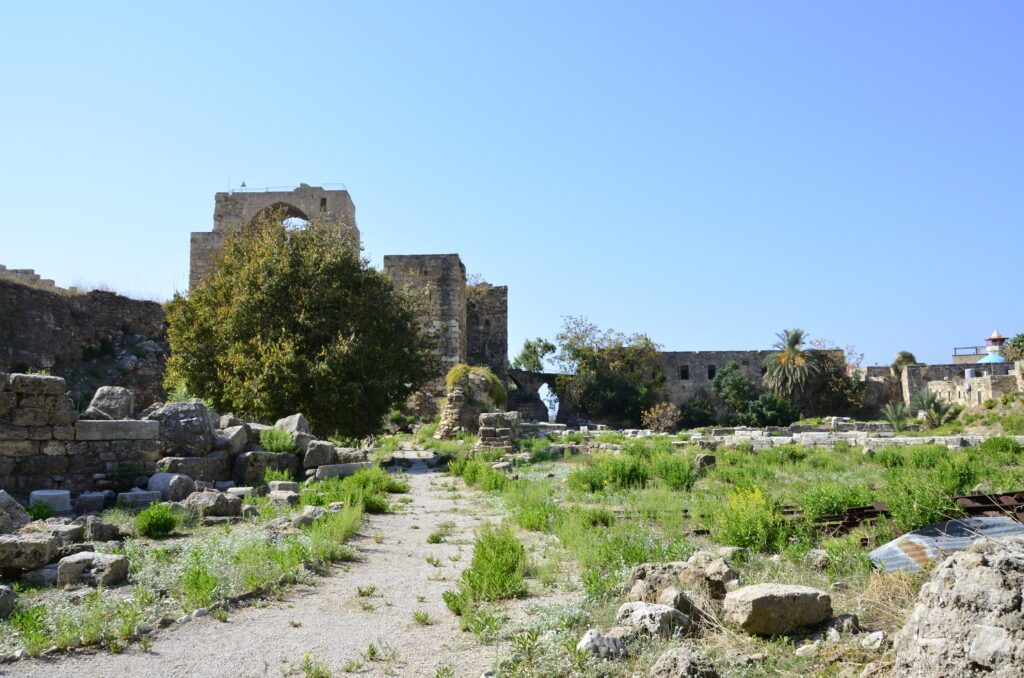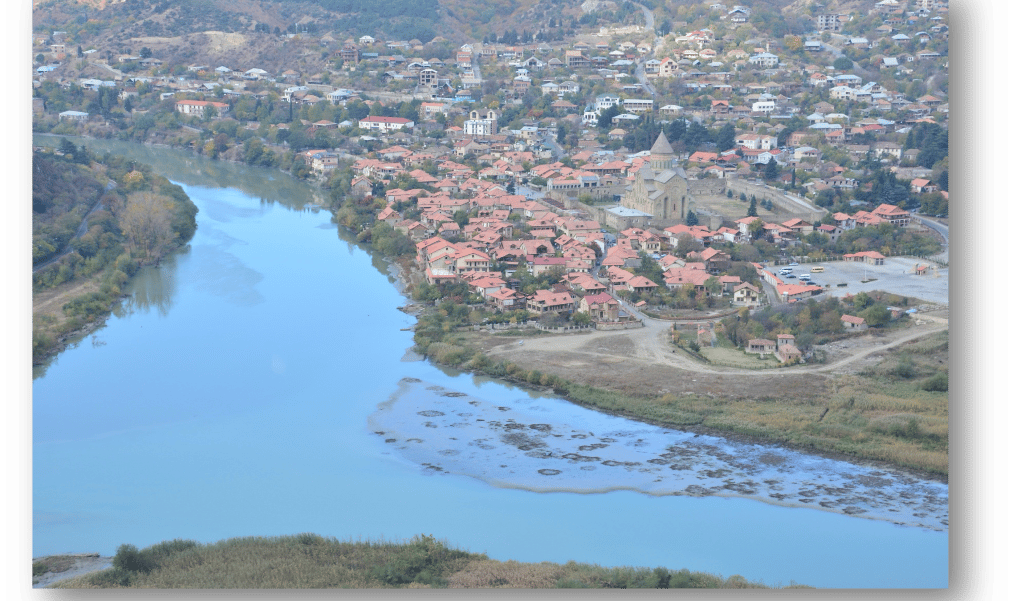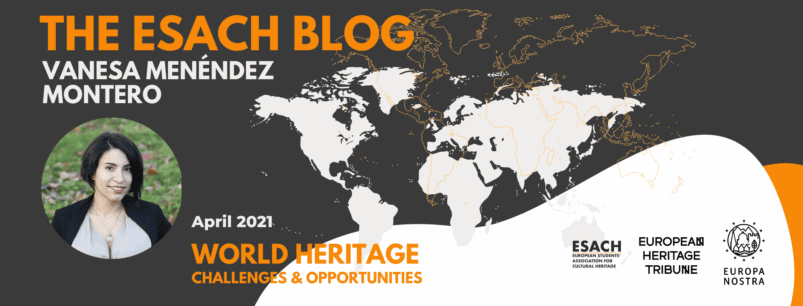In spite of the lessons that can be extensively drawn from historical experience, Cultural Heritage is not generally thought of in terms of its protection from war events. Urban management plans of culturally relevant contexts, in fact, rarely include preventive measures to minimize the damages of an armed conflict; measures that should obviously be prepared and implemented during peace-time. Yet, Cultural Heritage has a great impact on the image of a Country and its economy and as such it is a notable cornerstone of its future development.
Written by: Allesandra De Masi
On the whole, however, we are not unarmed against the destruction of war: a good Risk Preparedness Plan for Cultural Heritage can really make the difference, and the United Nations Educational, Scientific and Cultural Organization (UNESCO) initially provided the basic instruments to develop it. In this article, you shall find some information on the framework of this Convention and some lessons drawn from direct participation in the elaboration of a Risk Preparedness Plan.
The 1954 Hague Convention and its Second Protocol
After the destruction of the Second World War, which caused a great loss in Cultural Heritage, UNESCO developed the “Convention for the Protection of Cultural Property in the Event of Armed Conflict”, being this the first international treaty exclusively dedicated to the protection of Cultural Heritage from the war damages.
The Convention and its First Protocol state that all damage to cultural properties of any state and people constitutes a loss for the whole of humanity, exceeding the national law on the protection of Cultural Heritage for the first time in history. The Convention, in particular, distinguishes two degrees of protection: general and special. The goods that are subject to what is defined as special protection must be enrolled in a specific registry and are recommended to be pointed out by the distinctive emblem of the Blue Shield. The Blue Shield is a non-profit, international organization that aims to promote the ratification, respect and implementation of the Convention and to raise awareness on the importance of safeguarding Cultural Heritage through the activity of its international board and the organization of specialized trainings across the world.
Moreover, the Convention provides a list of safeguarding measures that have to be adopted in peace time and should be respected during the conflict by all the parties. However, the rising amount of criminal acts against Cultural Heritage at the end of the 20th Century made it clear that the Convention alone was unable to cope with the problem if implemented in its current form.

Consequently, a Second Protocol to The Hague Convention was adopted in 1999. The Second Protocol elaborates and enhances the provisions of the Convention relating to the safeguarding of cultural property in peace time, intensifying thus a greater protection than before. Accordingly, it creates the new category of the Enhanced Protection for Goods that possess particular features as: being particularly important for humankind, enjoying proper legal protection at the national level, and not being used for military purposes.
The guidelines for obtaining the Enhanced Protection are extremely practical, imply developing plans related to the emergency assessment and management, and require mitigation measures to be taken in peace time. After the release of the Second Protocol, some pilot-projects started, with the aim to fully implement the new provisions and correct them according to the outcomes.
The Risk Preparedness Plan
An example of the application of the Second Protocol was the Cooperation in Urban Dialogue and Development (CIUDAD) Project “War Free World Heritage Listed Cities” (WFWHLC): the project goals were to develop an efficient Risk Assessment and Management plan for the world heritage sites of the cities of Jbeil-Byblos, in Lebanon, and Mtshketa, in Georgia, and so to grant them the Enhanced Protection status.

By analyzing the two case-studies and relating the management outputs to the guidelines of the Second Protocol, we were able to design an efficient Risk Preparedness Plan pattern based on 3 essential sections.
The first section regards all the preventive actions that should be done in peace time to mitigate risks. Some examples of these are planning actions like:
- Plan a security system;
- Train a specialized staff, ready to operate as soon as the emergency happens;
- Sensitize citizens to be active in protecting Cultural Heritage when needed;
- Identify safe areas to be used as shelters and warehouses, if the movable heritage needs to be relocated.
Moreover, the plan also needs preventive actions that imply a detailed understanding of the heritage characteristics, and this because only through deep knowledge of the related cultural property you can choose the best actions to protect it. In this view, meaningful actions include:
- Plan a monitor system of the heritage’s conservation state and modifications
- Catalog cultural objects, by using digital tools if possible.
The second section regards the emergency management. During the crisis, we will have to:
- Implement the preventive measures already prepared;
- Alert the supervisors, that will organize the intervention of specialized staff and volunteers;
- Protect the immovable heritage;
- Evacuate the movable heritage if necessary.
Eventually, the third section details the post-emergency actions a priorities:
- Check the catalogs to identify where the objects are and what are their conditions;
- Verify the structures’ stability;
- Secure the damaged heritage;
- Implement preliminary restoration of damaged heritage;
- Return the movable heritage to its original location, where possible.
Useful tips we learned from the WFWHLC project
While analyzing two cases that were so different and yet so similar, we learned that to design a plan that can potentially deal with the most critical situation, we have to keep in mind three fundamentals.
First, the approach to each risk and object should be multidisciplinary. This leads to a better understanding of the problems and a more efficient use of resources. Second, the cultural site should be conceived as a complex system, with an ever present unpredictable element of uncertainty. And last, each site should be studied thoroughly, from several points of view: we should in fact study its history, the proceedings of its conservation and the list of emergencies that it had to deal with during the centuries to better address the premises for its preservation. These data could be useful not only to protect that heritage but also to plan proper valorization and fruition, and proper valorization and fruition are recognized as the first step to correctly preserve heritage.

Following these guidelines, the WFWHLC Project was able to submit the Mtskheta dossier and in 2016 the World Heritage site “Historical Monuments of Mtskheta” obtained the Enhanced Protection!
About the author

Alessandra De Masi is a PhD student at the University of Bologna; her research focuses on the protection and conservation of heritage at risk. In 2013, she was part of the “War Free – World Heritage Listed Cities” project. She also works with the Maniscalco Center – Heritage at risk research and documentation network, that aims to attract the interest of the public regarding risk prevention.
- Email: alessandra.demasi2@gmail.com
- LinkedIn: Alessandra De Masi
- Instagram: marlonob and Maniscalco Center
- Facebook: Alessandra Marly De Masi
- Academia: Alessandra De Masi
References
- O’Keefe, Roger et al. (2016). Protection of Cultural Property: Military Manual”, UNESCO, Sanremo. Available at: http://www.unesco.org/new/fileadmin/MULTIMEDIA/HQ/CLT/pdf/MilitaryManuel-En.pdf
- UNESCO (1954), “First Protocol to the 1954 Hague Convention”, Unesco. Available at: http://www.unesco.org/new/en/culture/themes/armed-conflict-and-heritage/convention-and-protocols/first-protocol/
- UNESCO (1954), “Hague Convention for the Protection of Cultural Property in the Event of Armed Conflict”, Unesco. Available at: http://www.unesco.org/new/en/culture/themes/armed-conflict-and-heritage/convention-and-protocols/1954-hague-convention/
- UNESCO (1994), “Historical Monuments of Mtshketa”, Unesco. Available at: http://www.unesco.org/new/en/culture/themes/armed-conflict-and-heritage/lists/enhanced-protection/georgia/
- UNESCO (1999), “Second Protocol to the 1954 Hague Convention”, Unesco. Available at: http://www.unesco.org/new/en/culture/themes/armed-conflict-and-heritage/convention-and-protocols/second-protocol/
- WATCH, “War Free World Heritage Listed Cities” Project”, Eye on Culture. Available at: http://www.eyeonculture.net/wfwhlc/

